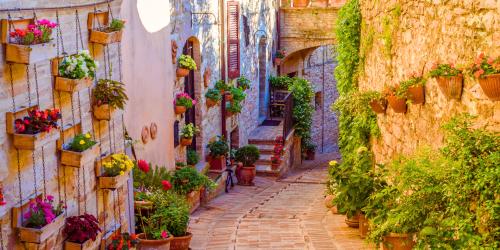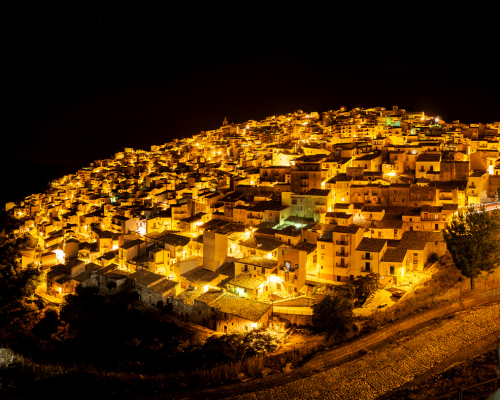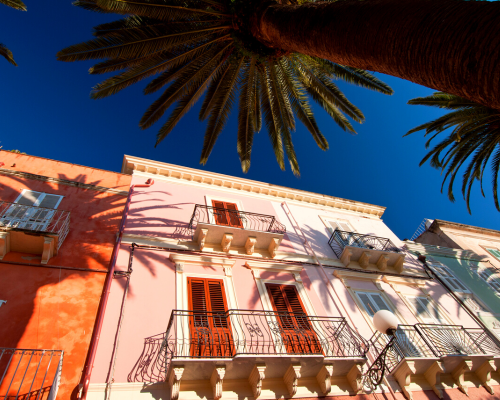

Eight Borghi to discover unexperienced Italy
Elders chatting c a bench in front of the local “casa del popolo”, children playing football, running around holding ice creams, zigzagging and whizzing; as you slowly walk to the taverna you’ve reserved for dinner, the appetite growing with the scents escaping from the flower-decorated windows and terraces and filing the air, everything is tinted in golden. This is what Italy is supposed to be about, right?
Well, in some places it still is. The most popular places will always - and deservingly - attracting tourists, but there is so much minor and unknown to be discovered. The villages you dream of when planning your truly Italian escapade, we call borghi.
The word literally means “rural village”, but a borgo is way more than this: these are the strongholds of Italianness, tophill and seaside villages that still preserve their authenticity and flair.
Here are a few that you should plan to visit if you’d like to experience non-touristic Italy:
A few kilometers out of Siena, San Quirico is treasured among the soft hills of Tuscan Val d’Orcia, the iconic lunar landscape made of bare clay hills colored in infinite shades of grey and green.
Lively and beautiful, the village is famous for its 8th century Romanesque church and the pretty historical center, with its main paved street lined with artisanal shops and bars. Walk across Medieval Porta Nuova and you’ll find the Horti Leonini, a magnificent Renaissance garden designed in the 1500s. San Quirico d’Orcia can be visited while walking the Via Francigena, the Italian Camino to Rome, which runs for 1000 kilometers from the Great Saint Bernard Pass to Rome and unsurprisingly finds its most beautiful section in Tuscany.

Umbria is not among the most popular regions in Italy, but it is surely one of the most surprising; also known as “Italy’s green lung” for its exceptionally lush landscape, this area South of Tuscany boasts an untamed nature and some among the prettiest borghi in the “Belpaese”.
Spello, just out of more popular Assisi, is especially pretty – and it gets even prettier when, every year on the day of Corpus Christi, its streets get completely covered in carpets of flowers prepared by the locals on the previous night with centuries-old techniques. Spello is the first village after Assisi along the Saint Francis Way, a walking route following the steps of Italy’s most beloved Saint.
The path continues from here and reaches Spoleto - a city more than a borgo, but still a little-known jewel of a place, coming alive every summer with one of the most popular theatre festivals in Europe.
This name may not ring any bell, as it is one that few Italians know about; this borgo is immersed in the Medieval and untamed area of Tuscia, a few kilometers and a couple of walking days far from Rome as you follow the Italian Camino to the Eternal City. It already looks something out of an Italian novella, as you walk out of an enchanted forest and into its archaeological park, but wait until you see the Roman amphitheater completely dug out of the local tufa stone, a small-scale Colosseum that you can walk in and across.
A few steps from it, an incredible Mitreo – a former altar to the Pagan God Mitra, people used to dance and bows under the blood of bulls scarified to the ancient divinity; it has then been turned into a Christian church, but beliefs, rituals and religions meet and intertwine in the frescoes and carvings decorating its rock walls.

This hamlet is a typical example of everything unexpected and surprising Italy has to offer – a community like few others you’ll encounter. This gem of a borgo is located in Sicily, but it’s completely different from anything you may associate to the island; no sea or beaches here, no lemons basking in the scorching sun – it is actually quite cool, being the village built vertically at 1045 meters above sea level.
Once risking to become inhabited with young people escaping towards better opportunities, the village found its renaissance in the Magna Via Francigena, a walking itinerary connecting Palermo to Agrigento through the villages of inland Sicily; the local community welcomed walkers with open arms, opening their houses to host them and creating a local association to promote Prizzi and make it more and more welcoming to visitors. On paper, this is not the most special place Sicily has to offer – but its people make it so, and our travelers have even bought houses in the village to come back to the community they will forever feel a part of.
It comes as no surprise that the name Gravina means canyon: founded by the Greeks in teh 7th century BC, the city is literally built at the edge of a large canyon, an incredible view to enjoy after a visit to the beautiful Cathedral.
To understand the history of Gravina one must "go underground". Underneath the modern city lies a hidden city, dug through the centuries in the soft tufa rock. Cellars that stored wine, rock churches, stables, cave houses, shelters…an underground world to explore with young local volunteers who, if you decide to take part in their guided tour, will passionately lead you to the discovery of this underground world.
Gravina is one of the villages along the Way to Matera, the walking itinerary connecting the coastal town of Bari, in Puglia, to Matera and its "Sassi", located in the neighboring region, Basilicata: from the sea to the land, from the water to the rocks and caves that humans have continuously inhabited since the Paleolithic period.
This picturesque hamlet is nestled in the heart of the central region of Lazio, along the first section of Southern Via Francigena – while all roads lead to Rome, the Southern section of the Italian Camino continues towards the South and to Brindisi, where pilgrims would embark for their long overseas journey to reach the Holy Land.
As you approach Sermoneta, perched atop a rocky hill and surrounded by a verdant sea of olive groves, the silhouette of its imposing Caetani Castle dominates the horizon, proudly overlooking the village. Entering the hamlet, you'll find yourself transported back in time. The narrow, winding streets are lined with centuries-old buildings, their warm-colored façades adorned with colorful flowers cascading from the windows.

If the thought of visiting the only inhabited town in the middle of a Sardinian Island sounds fascinating, you’ll be delighted by Carloforte: simply known as “the village” in the local dialect, this Ligurian enclave was founded on the island of San Pietro, in South-West Sardinia, by fisherman families coming from the Ligurian village of Pegli.
The families had previously lived on the Tunisian island of Tabarka, and their new home is still a fascinating mix of the North-African, Ligurian and Sardinian heritages: the local cuisine features tuna and cous cous, the colorful houses and narrow streets are decorated with symbols from local folklore and “Tabarkine” traditions, the dialect very close to modern Genoese,with words of Tunisian Arabic and French derivation.
The best way to explore Carloforte is on foot: a loop walk starting from the harbor takes you through the most picturesque spots of this multicultural island. A ferry ride from the island, there is much more to be discovered - from Sant'Antioco, where flamingoes fly to nest in the white expanse of the salt pans.
you may have never heard of Cilento – but if you’ve been to Amalfi Coast, you were not very far from it. Located less than 3 hours from Amalfi, Marina di Camerota lies in the heart of the Cilento Natural Park, an undiscovered gem best known for producing the best buffalo mozzarella the country has to offer; there is much more to be appreciated here, from long sandy , blue-flag certified beaches to the ancient Greek cities, from scenic hiking trails in the Cilento and Vallo di Diano National Park, a Unesco Heritage Side, to seaside resorts on the Tyrrhenian sea.
Something all these borghi have in common? They are all located along Italian Caminos, great to be discovered at your own pace during a self-guided walking trip.
Self-guided walking trips allow you to choose the itinerary, the date you’d like to start walking, and your travel companions; you are free to walk at your own pace, following detailed documentation and a personalized APP to be used off-line.
If you'd like to know more about this way of travelling, check the article we have written to tell you all about it!
This way of travelling is perfect to enjoy Italy at its slowest and least known – these caminos often run across small villages that may have had philological importance in ancient times, but are not touristic hubs in modern days; they are still relatively new to travellers but are now getting used to welcoming them – the kind of warm, genuinely enthusiastic hospitality that may be more difficult to perceive in the most famous places.